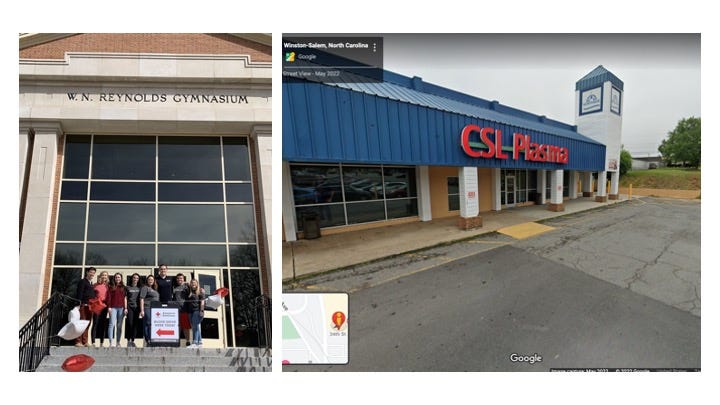In Part I, we discussed how maintenance improves your health “stock.” Part II and Part III discussed using health for your own purposes- to work and play. But can you transfer your well-maintained health to other people? Does it have a resale value? Why yes, at least $350 per pint.
1. Liquid cash pulsing through your veins: Blood!
Blood is a major health product market, bought and sold between hospitals and the Red Cross. But wait, I only got a t-shirt and a pack of Oreos last time I donated. What gives?
Even though most of the U.S. blood supply is donated, this doesn’t mean that blood products escape economics. Blood donations require trained labor and medical equipment to collect and process, all of which have a cost. Blood donation levels are also not uniform across the country. The Midwest is more generous than the coasts. For example, about 12 percent of Iowa’s population donates compared to 3 percent nationally.[1] Once donated, blood supply must be allocated across the country to hospitals where it is most needed.
What’s an efficient, responsive, and low-bureaucracy way to allocate scarce resources to those who need it most? Markets. To do this, the Red Cross and other nonprofit blood centers sell blood donations. Prices follow processing costs, with labor costs making up about half of the total. This means that blood prices are much higher on the coasts, both because of lower donation levels but also due to higher personnel costs and administrative costs such as rental office space and advertising time.
2. The problem with paying for blood
If blood has a resale value, why are we still donating free of charge? The problem is the same one which plagues buying used cars (or insurance policies). If you can’t observe the true history of a used car, the seller may pass off a “lemon” as a “peach.”—and you’ll be left with an empty wallet and a broken-down car. This is called adverse selection.
Until the 1970s, U.S. donors were paid for their blood. But monetary incentives tended to attract unhealthy blood samples, likely to be tainted with diseases such as hepatitis. For example, blood donation was often successful when located adjacent to bars! Switching to unpaid donation meant blood came from donors less desperate for money and more motivated by altruism.

Blood plasma products are still obtained through paid donors, but plasma does not go directly into another person. It is instead processed and broken down into protein components, in comparison to the more fragile red blood cells used in whole blood donation. The ability to process plasma donations mitigates the adverse selection problem and makes payments less problematic.
3. Truth-telling in blood donation
Altruistic blood donation reduces incentives to lie about the quality of your blood. Still, having a blood-borne disease might not be something you want to share with your colleagues roping you into the office blood drive! This could create an incentive to donate diseased blood to protect your privacy. How does the Red Cross fix this problem of unequal information about blood’s history?
Though an anonymous “truth-telling” sticker. The donor attends the office blood drive but is given two stickers marked only with bar codes. One indicates “donate this blood,” while the other indicates “dispose of this blood.” In privacy, the worker can choose the appropriate sticker and proceed with the donation motions. They don’t have to reveal private information to nursing personnel or their office colleagues and the quality of our blood supply is maintained.
As always, keep me updated on what you’re up to or reach out to chat with me about these issues!
Best,
TMD
Jump back to Part I, “Taking Stock,” Part II, “Looking over Time and Geography,” or Part III, “Obesity, Solved.”
[1] Engber, Daniel. “The Business of Blood: Does the Red Cross Sell Your Frozen Plasma?,” The Explainer, Slate Magazine. Sept 11, 2006.





